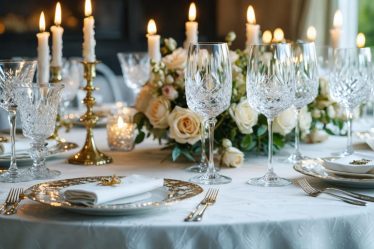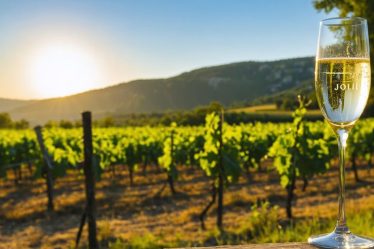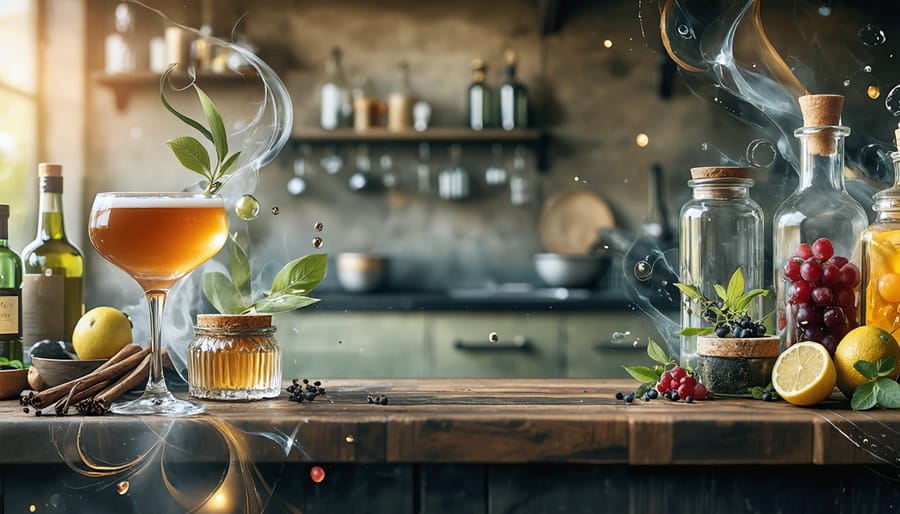
Pour yourself a glass of wine or mix a cocktail, and you might not think twice about calling it a beverage. Yet alcohol’s identity extends far beyond our happy hour favorites into a fascinating world of science, culture, and practical applications. While we commonly sip it in our favorite drinks, alcohol serves as a vital ingredient in everything from vanilla extract in our kitchen cabinets to the perfumes on our vanities. This multifaceted compound has sparked debates among regulators, manufacturers, and consumers about its true classification. Is it simply a drink, a food additive, or perhaps something entirely different? As someone who’s spent years exploring both the culinary and beauty worlds, I’ve discovered that alcohol’s role in our daily lives is far more complex than what fills our wine glasses. Let’s dive into the intriguing question of whether alcohol is just a beverage, or if it’s time to broaden our perspective on this versatile substance that shapes so many aspects of our modern lifestyle.
The Evolution of Alcohol Beyond the Glass
From Ancient Remedies to Modern Mixology
From ancient Egyptian beer vessels to modern craft cocktail bars, alcohol’s journey through human history is as fascinating as it is diverse. Our ancestors didn’t just drink it – they used it medicinally, incorporated it into religious ceremonies, and even preserved food with it. I remember my grandmother telling me stories about her mother using brandy to make traditional fruit preserves, a practice that dates back centuries.
Today’s mixologists are like modern-day alchemists, blending historical knowledge with contemporary innovation. They’re reviving forgotten recipes while creating exciting new combinations that push the boundaries of what we consider a beverage. Think lavender-infused gin spritzers or kombucha-based cocktails that marry ancient fermentation techniques with current wellness trends.
What’s particularly exciting is how these traditional uses are finding new life in unexpected ways. That same preservative quality that our ancestors relied on is now being explored in cutting-edge culinary techniques, while the medicinal properties they recognized are being studied by modern scientists. It’s a beautiful reminder that sometimes the best innovations come from looking back while moving forward.
Beyond Drinking: Alcohol’s Versatile Role
While most of us think of alcohol primarily as something to enjoy in our favorite cocktails, the versatile uses of alcohol extend far beyond the bar cart. In my kitchen, I’ve discovered how a splash of wine can transform a simple pasta sauce into something extraordinary, while vanilla extract (which is alcohol-based) is essential for my weekend baking adventures.
But that’s just the beginning! Alcohol plays a crucial role in many of our everyday products. From perfumes that capture delicate scents to hand sanitizers that keep us healthy, and even the rubbing alcohol in our first-aid kits, these alcohol-based products have become household staples. I’m particularly fascinated by how alcohol appears in my favorite beauty products, acting as a preservative and helping other ingredients penetrate the skin more effectively.
In the world of crafts and DIY projects, alcohol-based products like methylated spirits are go-to solutions for cleaning and restoration work. It’s amazing how one substance can wear so many different hats in our daily lives!
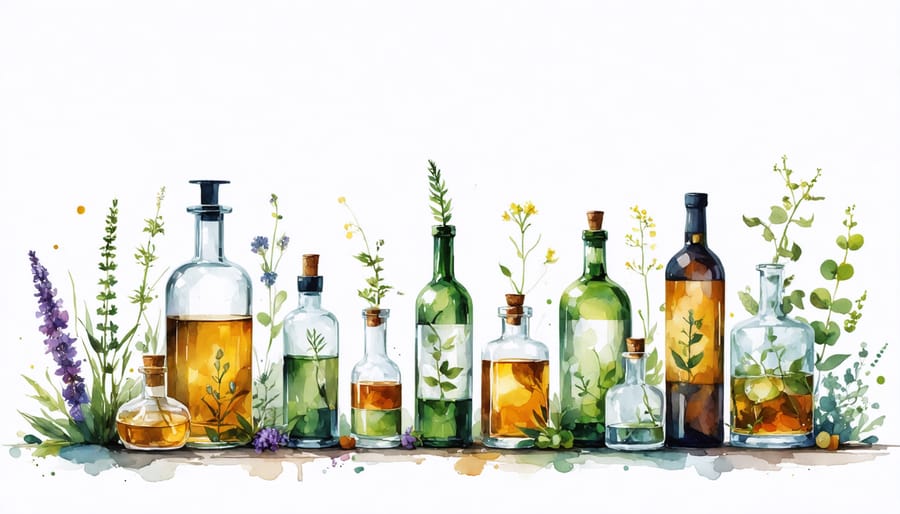
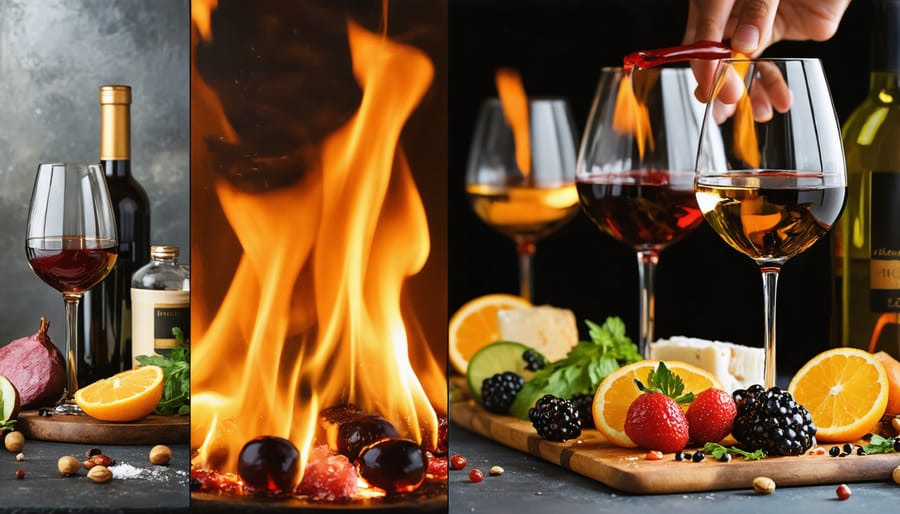
Alcohol in the Kitchen: A Culinary Game-Changer
Flavor Enhancement and Food Preservation
Beyond its role as a beverage, alcohol plays a fascinating part in our culinary adventures. As someone who loves experimenting in the kitchen, I’ve discovered that having essential alcohols for home use can truly elevate your cooking game. When you add a splash of wine to your risotto or a dash of vodka to your pasta sauce, you’re not just adding flavor – you’re unlocking complex chemical reactions that enhance the overall taste experience.
What makes alcohol particularly special in cooking is its ability to bond with both fat and water molecules, helping to release and distribute flavors that might otherwise remain locked away. That’s why your grandmother’s vanilla extract is made with alcohol – it’s the perfect solvent for capturing vanilla’s essence!
In terms of preservation, alcohol has been a trusted method for centuries. Think about brandied fruits, which can last for months while developing deeper, more complex flavors. The same principle applies to homemade extracts and tinctures. When I make my own vanilla extract, the alcohol not only draws out the vanilla beans’ flavors but also ensures the extract stays fresh and potent for years.
Even in modern cooking, alcohol’s preservative properties come in handy for creating infusions, marinades, and flavor bases that can enhance countless dishes while extending their shelf life.
Creative Cooking Applications
Beyond its traditional role as a beverage, alcohol brings exciting possibilities to your kitchen adventures! I’ve discovered that incorporating various spirits into cooking can elevate everyday dishes into something truly special. From rich red wine reductions that transform simple pasta dishes to bourbon-infused barbecue sauces that add depth to grilled meats, the possibilities are endless.
One of my favorite techniques involves using vodka in pastry-making – it creates incredibly flaky pie crusts because it evaporates more quickly than water, leaving perfect layers. Wine isn’t just for drinking either; it’s essential in many culinary applications in fine dining, from classic coq au vin to modern risottos.
Here’s a pro tip I learned from years of experimenting: when cooking with alcohol, choose something you’d actually enjoy drinking. The flavors concentrate as you cook, so quality matters! Try adding a splash of white wine to cream sauces, or experiment with beer in your next batch of bread – the yeast creates an amazingly tender crumb.
Remember that most alcohol evaporates during cooking, leaving behind complex flavors that can’t be replicated with other ingredients. Whether you’re flambéing bananas foster for a dramatic dessert or adding depth to your holiday gravy with a dash of brandy, cooking with alcohol opens up a whole new world of culinary possibilities.
Beauty and Wellness Applications
Skincare and Beauty Products
When I first started exploring skincare ingredients, I was surprised to see alcohol listed in so many of my favorite products. But here’s the thing – not all alcohols in beauty products are created equal! Many skincare and beauty formulations use beneficial forms of alcohol that actually help deliver active ingredients deeper into your skin.
You’ll often spot ingredients like cetyl alcohol and stearyl alcohol in your creams and lotions. These “fatty alcohols” are actually wonderful moisturizing agents that help create that silky-smooth texture we love. They’re completely different from the drying alcohol we typically think of in hand sanitizers.
Beauty brands also use alcohol to help products absorb better and create more effective formulations. For example, many toners contain small amounts of denatured alcohol to help other beneficial ingredients penetrate the skin more effectively. It also acts as a preservative, keeping your products fresh and safe to use for longer.
In fragrances and perfumes, alcohol serves as the perfect carrier for scent molecules. It helps disperse the fragrance evenly and allows it to linger on your skin throughout the day. The next time you spritz on your favorite perfume, you can thank alcohol for that perfect distribution of scent!
Just remember to read your labels carefully – while some alcohols can be beneficial in skincare, others might be too drying for sensitive skin types. When in doubt, patch test new products and listen to what your skin tells you.
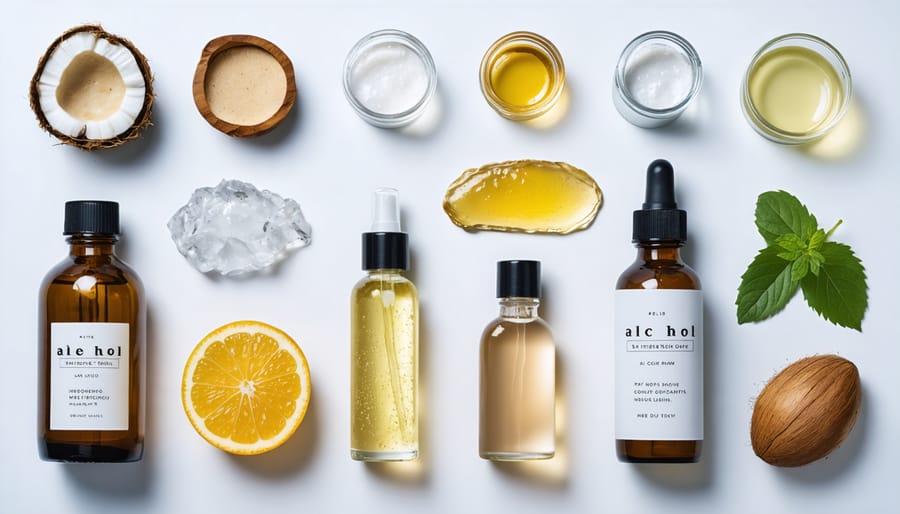
DIY Beauty Solutions
While we often think of alcohol as just a beverage, it can be a fantastic addition to your DIY beauty routine. I discovered this game-changing secret during my early days of experimenting with homemade beauty treatments, and I’m excited to share these tried-and-true solutions with you!
For a refreshing facial toner, mix equal parts witch hazel (which contains natural alcohol) and rose water. This combination helps minimize pores and removes excess oil without over-drying your skin. I love using this after a long day when my skin needs a pick-me-up!
Create an effective hand sanitizer by combining rubbing alcohol with aloe vera gel and a few drops of your favorite essential oil. The alcohol acts as a disinfectant while the aloe keeps your hands moisturized. Just remember to maintain a 60:40 ratio of alcohol to aloe for maximum effectiveness.
Want gorgeous, shiny hair? Try this vodka-based hair rinse: Mix one part vodka with two parts water and use it as a final rinse after shampooing. The alcohol helps remove product buildup and leaves your hair gleaming. Trust me, this salon-worthy trick works wonders!
For those dealing with foot odor, an alcohol-based foot spray can be a lifesaver. Mix equal parts vodka and peppermint tea tree oil in a spray bottle. The alcohol kills bacteria while the essential oils provide a fresh scent.
Remember to always patch test these treatments first and dilute alcohol appropriately to avoid skin irritation.
As we’ve explored throughout this journey, alcohol is so much more than just something we might enjoy at happy hour or during special celebrations. It’s a fascinating substance that weaves its way through our daily lives in ways we might not even realize. From being a key player in our favorite vanilla extract to serving as a vital ingredient in our skincare routines, alcohol truly demonstrates its versatility beyond the beverage aisle.
I remember when I first started exploring cooking with alcohol, thinking it was just about adding wine to pasta sauce. But through years of experimenting in my kitchen (and hearing wonderful stories from our community), I’ve discovered countless ways this versatile ingredient enhances both our culinary adventures and beauty routines.
Whether you’re using vodka to create the perfect pie crust, champagne to add sparkle to your homemade face mist, or rubbing alcohol to clean your makeup brushes, alcohol’s applications are truly remarkable. It’s a prime example of how something we typically think of as just a drink can transform into a valuable tool in our daily lives.
As we wrap up our exploration, it’s worth noting that alcohol’s role as a beverage is just one chapter in its fascinating story. Whether you choose to enjoy it as a drink or incorporate it into your cooking and beauty routines, understanding its various applications helps us make more informed choices about how to use it effectively and responsibly.
Remember, the key is to approach alcohol with knowledge and purpose, recognizing its potential while being mindful of its proper use in different contexts. After all, isn’t it amazing how one substance can bring so much versatility to our lives?

